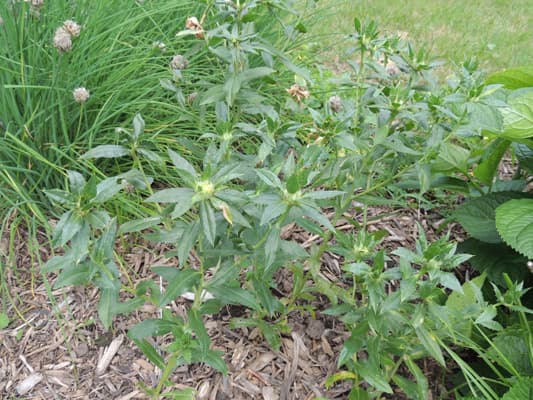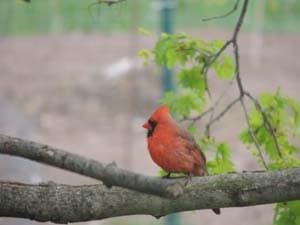How to Grow and Care for Safflower Plants

About Growing Safflower Plants in Your Home Flower Garden
The versatile annual Safflower plant and flowers are grown for a variety of reasons. Human consumption dates back over 4,000 years, to the ancient Egyptians. Annual Safflowers are native to Asia and are found growing in arid regions, where the summers are long, hot, and dry. It is drought tolerant.
Safflower is an edible plant. It is a culinary herb. Use the tender shoots in salads and raw dishes. The seeds have a slightly bitter taste. Eat them raw or roasted. The seeds are high in fats and oils. Safflower seeds are used for oils in cooking and are a relatively popular type of birdseed. It is also grown for its beautiful orange, red and yellow flowers. The flowers will bloom from mid-summer through fall. Dyes are extracted from its petals, and there are medicinal applications.
When you grow Safflower, a wide variety of birds eat the ripening seeds.
Safflowers Attract Birds

Annual Safflowers attract birds. Some birds like the seeds, while others do not.
BTW: If you don’t want squirrels around your bird feeder, use safflower seeds. Squirrels do not like them.
Here is a list of birds that like safflower seeds:
Blue Jays
Grosbeaks
House and Purple Finches
Mourning Doves
Tufted titmice
White-breasted nuthatches
Safflower Plant Specifications
Flower Colors: Shades of orange and yellow.
Flowers Bloom: Midsummer
Plant height: 1 to 5 feet tall, depending upon variety.
Ideal Soil pH: 5.0 – 8.0.
Plant Hardiness Zones: 3 – 9
Light Needs: Bright, full sunlight to partial sunlight in warmer regions.
Is the Plant Toxic?: Yes.
Deer Resistant? Yes. The plants are resistant to deer, rabbits, and other foraging animals.
Number of Species: 25 species.
Plant Type: Annual
Botanical Name: Carthamus Tinctorius
Other Names: American Saffron, Bastard Saffron, Benibana, Benibana Flower, Dyer’s Saffron, Fake Saffron, Safranon, Zaffer, Zafran.
Are Safflower Plants Edible?
YES!!
When consuming Safflower comes to mind, we often think of safflower oil first. It is popular because of its cholesterol-lowering and heart-healthy properties. But, the leaves and tender young shoots are edible, too. Eat them waw or cooked. Also, the seeds are edible and are used in a variety of ways.
Medicinal Applications for Safflower Plants
Consuming safflower is good for your health. And, it is used in a variety of home remedies, too. Here are some of them:
- It lowers fevers.
- Use it to help prevent heart disease.
- It lowers cholesterol.
- Safflower is used to treat skin problems, rashes, and even measles.
- The plant’s anti-inflammatory and antioxidant properties make it useful in treating a variety of ailments.
Light Requirements
Annual Safflowers grow bust in full, direct sunlight. Plant them in a location that receives bright sunlight for several hours a day.
Too little sunlight results in leggy plants. And, it makes them more susceptible to plant disease.
Annual Safflowers Plant Propagation
Safflower is grown from seeds. They do not transplant well. So, we recommend planting them directly into the flower garden. Sow or plant seeds after the last frost in your area. Plant the seeds 1/2 inch deep Then, cover lightly with fine garden soil. Keep the soil moist during germination. Seeds should sprout in seven to fourteen days. The ideal soil temperature for germination is 70 degrees.
In areas with a shorter growing season, start seeds indoors 4-6 weeks before the last frost in your area. The plant has a deep, extensive root system, so use individual pots. As previously mentioned, they do not transplant well. So, be careful to keep the root system intact during transplanting.
Safflower is not common in seed catalogs. If you are also a bird watcher, you can grow some seeds from the safflower bird seed that you purchase.
Days to Germination: 7 – 14 days.
Final Spacing: 6 – 12 inches apart.
How to Grow Safflower Flower Plants
Safflower plants thrive in warm weather. And, they do not like cold weather. They need a warm, arid climate, and a long growing season. Safflowers do not do well in wet and humid conditions and can fall victim to fungal disease. It needs 120 days between the first and the last frost. Select a location to grow a safflower that is in full sun.
Soil and fertilizer needs:
Annual Safflowers do well in average to good soils. To give the plants a good start, mix in plenty of compost at the panting site. The soil needs to be well-draining to avoid root rot. The soil should be deep, as the taproot grows several feet deep in search of moisture and nutrients.
Fertilize the plants a month after planting with a general-purpose fertilizer. Then apply fertilizer again just before the blooming period.
Water Needs:
Water well when planting them. After the germination period, Safflower plants grow well in dry soils. Water then only during extreme droughts.
Weeding:
Weed around plants when they are young.
After the plants are several inches tall, add a layer of mulch to keep the weeds down and help to retain soil moisture.
Harvesting seeds:
Harvest seeds in the fall when the leaves begin to die back. Make sure seeds are completely dry before harvesting and storing them. Gently rub the seeds to remove them from the flower head. Then, once the seeds are completely dry, store them in a cool, dry place, out of sunlight.
Growing Safflower Plants in Flowerpots and Containers
Annual safflowers are not good candidates to grow in flowerpots and containers. First, they are not an attractive plant. Second, some varieties grow quite tall. Most often these plants are grown for the seeds and to attract birds to the seed-laden flowerheads in the Fall.
Insects and Plant Disease
In wet or rainy areas, Safflower plants are very susceptible to plant disease. Root rot occurs in wet and soggy soil. Fungal diseases are common in hot and humid weather.
Many insects can be found eating parts of the plants. They include grasshoppers, aphids, wire worms, cutworms and sunflower moths. Use insecticides as needed.
There are mixed opinions among bird watchers, on whether squirrels eat the seeds. But, This author does not squirrels dining at feeders filled with safflower seeds.
Opossum and raccoons may also eat them.
Also see: Plant Problems – Identify the causes and find the cures.
Related Articles
Also, people who read this article will like:
Bird Seed Feeding Reference Chart
Please support our site. Shop for:
- rmmatthews100@hotmail.com
- 585-721-6528
- Rochester, NY
©1999-2024 GardenersNet.Com, All Rights Reserved

